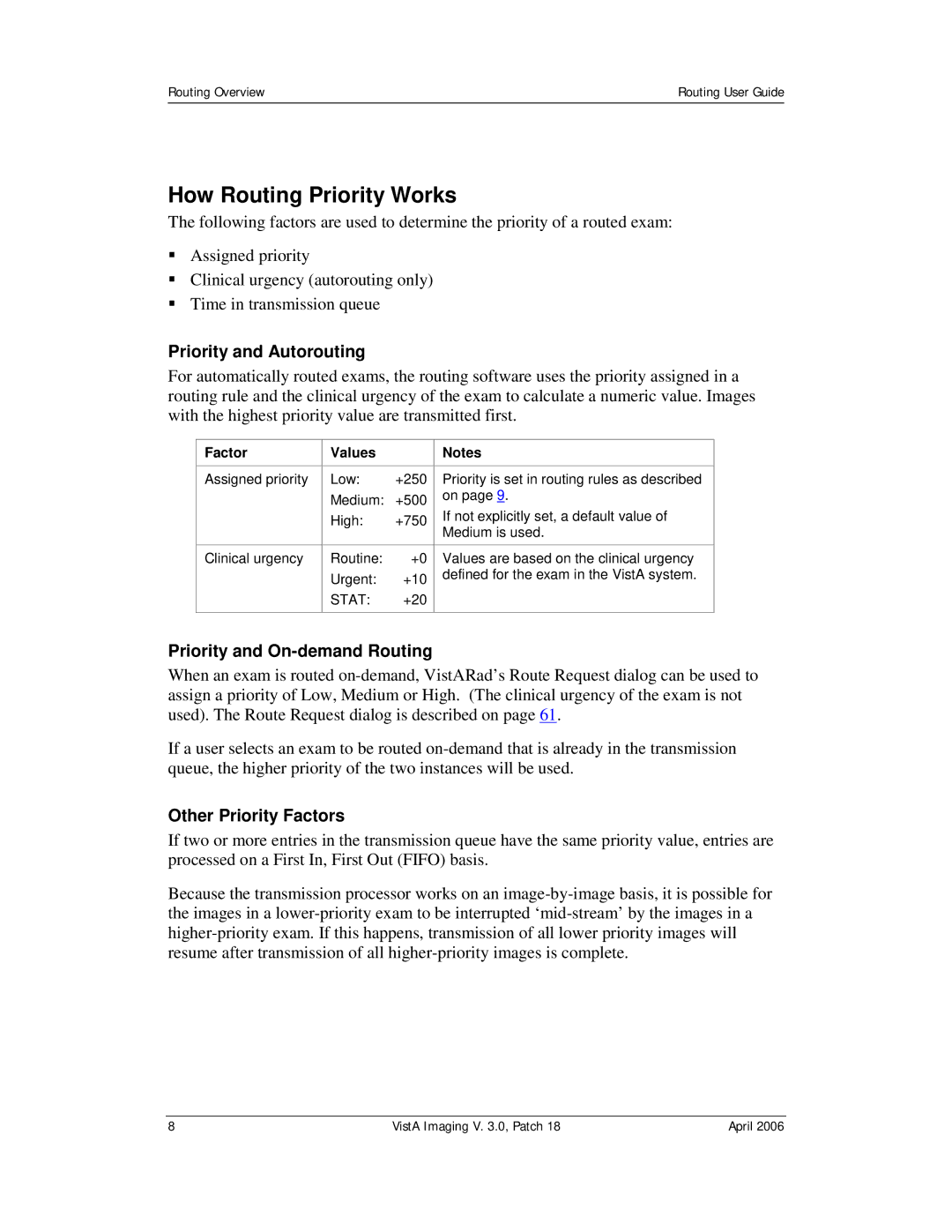Routing Overview | Routing User Guide |
|
|
How Routing Priority Works
The following factors are used to determine the priority of a routed exam:
Assigned priority
Clinical urgency (autorouting only)
Time in transmission queue
Priority and Autorouting
For automatically routed exams, the routing software uses the priority assigned in a routing rule and the clinical urgency of the exam to calculate a numeric value. Images with the highest priority value are transmitted first.
Factor | Values |
| Notes |
|
|
|
|
Assigned priority | Low: | +250 | Priority is set in routing rules as described |
| Medium: | +500 | on page 9. |
| If not explicitly set, a default value of | ||
| High: | +750 | |
| Medium is used. | ||
|
|
| |
|
|
|
|
Clinical urgency | Routine: | +0 | Values are based on the clinical urgency |
| Urgent: | +10 | defined for the exam in the VistA system. |
|
| ||
| STAT: | +20 |
|
|
|
|
|
Priority and On-demand Routing
When an exam is routed
If a user selects an exam to be routed
Other Priority Factors
If two or more entries in the transmission queue have the same priority value, entries are processed on a First In, First Out (FIFO) basis.
Because the transmission processor works on an
8 | VistA Imaging V. 3.0, Patch 18 | April 2006 |
